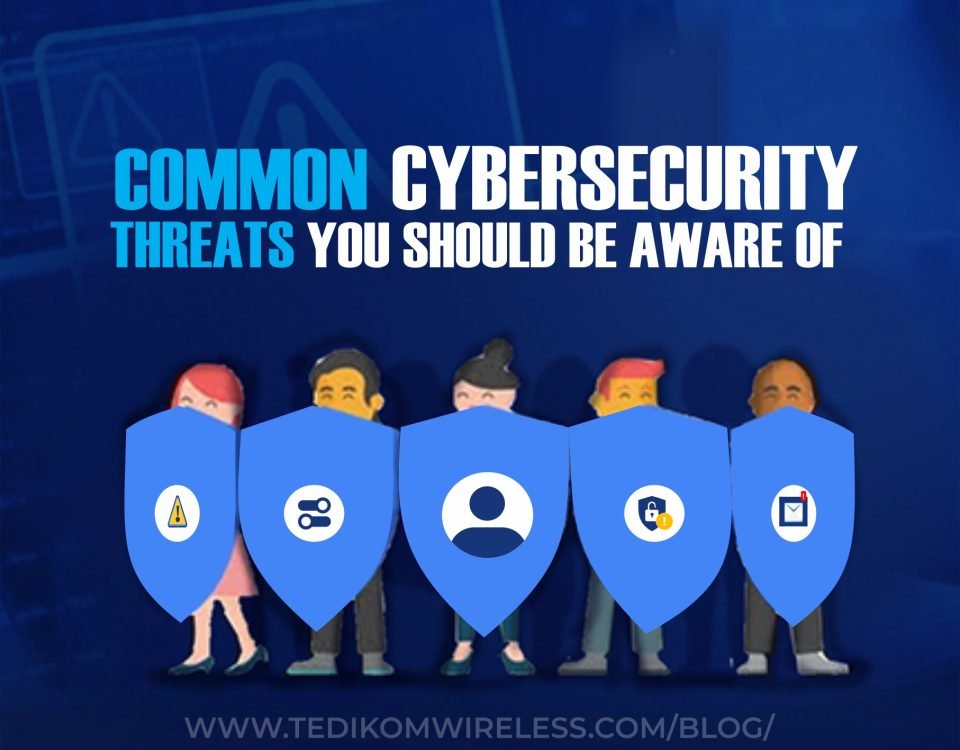Common Cybersecurity Threats You Should Be Aware Of
Cyber threats are becoming a top issue for both individuals and businesses. It is important to understand these prevalent cybersecurity risks if you want to safeguard your private data and yourself online.
Phishing Attacks: Phishing is a kind of cyberattack in which perpetrators assume the identity of trustworthy organizations to deceive victims into divulging personal data, including credit card numbers, usernames, and passwords. These attacks often take the form of emails or communications that look from reliable sources but are meant to steal your personal data. To prevent falling victim, be cautious of unsolicited emails, avoid clicking on suspicious links, and confirm the legitimacy of requests before sharing any personal information.
Malware: Malware is software that is intentionally created to cause harm, interfere with operations, or obtain unauthorized access to a computer. Ransomware, worms, and viruses are common forms of malware. Particularly, ransomware has grown to be a serious concern, as hackers encrypt your files and demand a fee to unlock them. Installing reliable antivirus software, maintaining system updates, and using caution when obtaining files from unidentified sources are all good ways to prevent malware infections.
Social Engineering: These types of attacks require compelling people into disclosing private information. To obtain sensitive data or systems, attackers take advantage of psychological traits in people. This can involve using strategies to trick others into giving access to private locations or information, such as tailgating, baiting, or pretexting. Exercise doubt, be on the lookout for demands for personal information that are not requested and confirm the legitimacy of messages before cooperating with them.
Man-in-the-Middle Attacks: In this type of attack, a hacker secretly eavesdrops on communication between two parties. This gives the attacker the ability to control the conversation or eavesdrop on confidential information. Sensitive data transfers or financial transactions are especially vulnerable to this kind of assault. Use encryption protocols like HTTPS, implement secure VPNs, and be cautious when connecting to public Wi-Fi.
Denial of Service (DoS) Attacks: The goal of a DoS attack is to overload a network or system with traffic, preventing it from functioning. This may result in lost revenue, downtime, and service interruptions. Attacks known as distributed denial of service (DDoS) are much more effective since they leverage numerous systems to initiate the attack. Employ firewalls, intrusion detection systems, and DDoS protection services to mitigate the impact of such attacks.
Insider Threats: These are people who work for a company and exploit their access to confidential data for their own gain or to do harm to the company. Having strong security mechanisms in place to monitor and reduce such risks is essential for organizations, as it can be either purposeful or unintentional. Implement strict access controls, conduct regular security training, and monitor employee activities to detect and prevent malicious behavior.
IoT Vulnerabilities: Although Internet of Things (IoT) devices are growing in popularity, there are security dangers associated with them. IoT devices are susceptible to cyberattacks due to weak default passwords, unencrypted connections, and lack of security, which gives hackers access to private data and even the ability to take over linked devices. Make sure to change default passwords on IoT devices, keep firmware updated, segment IoT networks, and use strong encryption to secure communication.
Finally, it should be noted that cybersecurity threats are always changing, getting more advanced and harmful every day. Maintaining awareness of these risks and putting best practices into action are crucial for both individuals and businesses looking to protect themselves. This includes creating strong, one-of-a-kind passwords, updating software, being wary of shady emails or communications, and spending money on cybersecurity solutions to protect against possible intrusions. You may lessen your chance of becoming a victim of cyberattacks and successfully safeguard your digital assets by being watchful and proactive.









